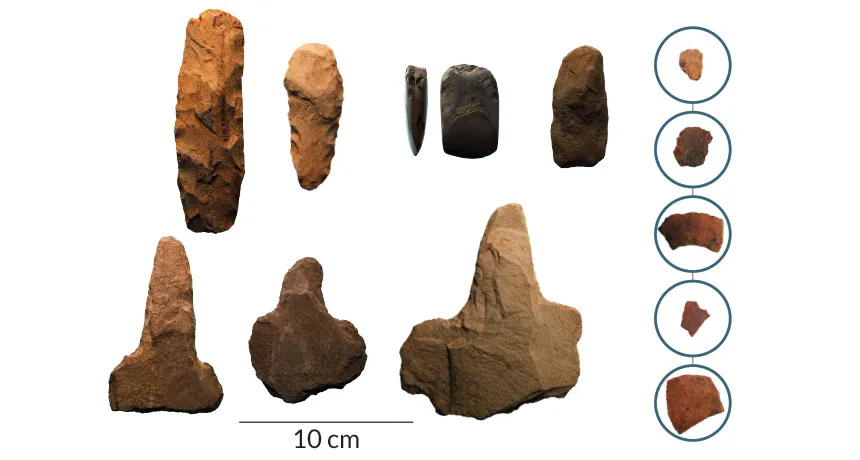Ancient pottery maps route to South Pacific
New dating of New Guinea artifacts is first hard evidence of 3,000-year-old cultural connection between islanders and seafarers

HIGHLAND MIX Pottery fragments (far right) found in New Guinea are more than 3,000 years old, suggesting to researchers that island natives — who also made various stone implements (center and left) — influenced an Asian seafaring culture that spread eastward.
D. Gaffney 2015